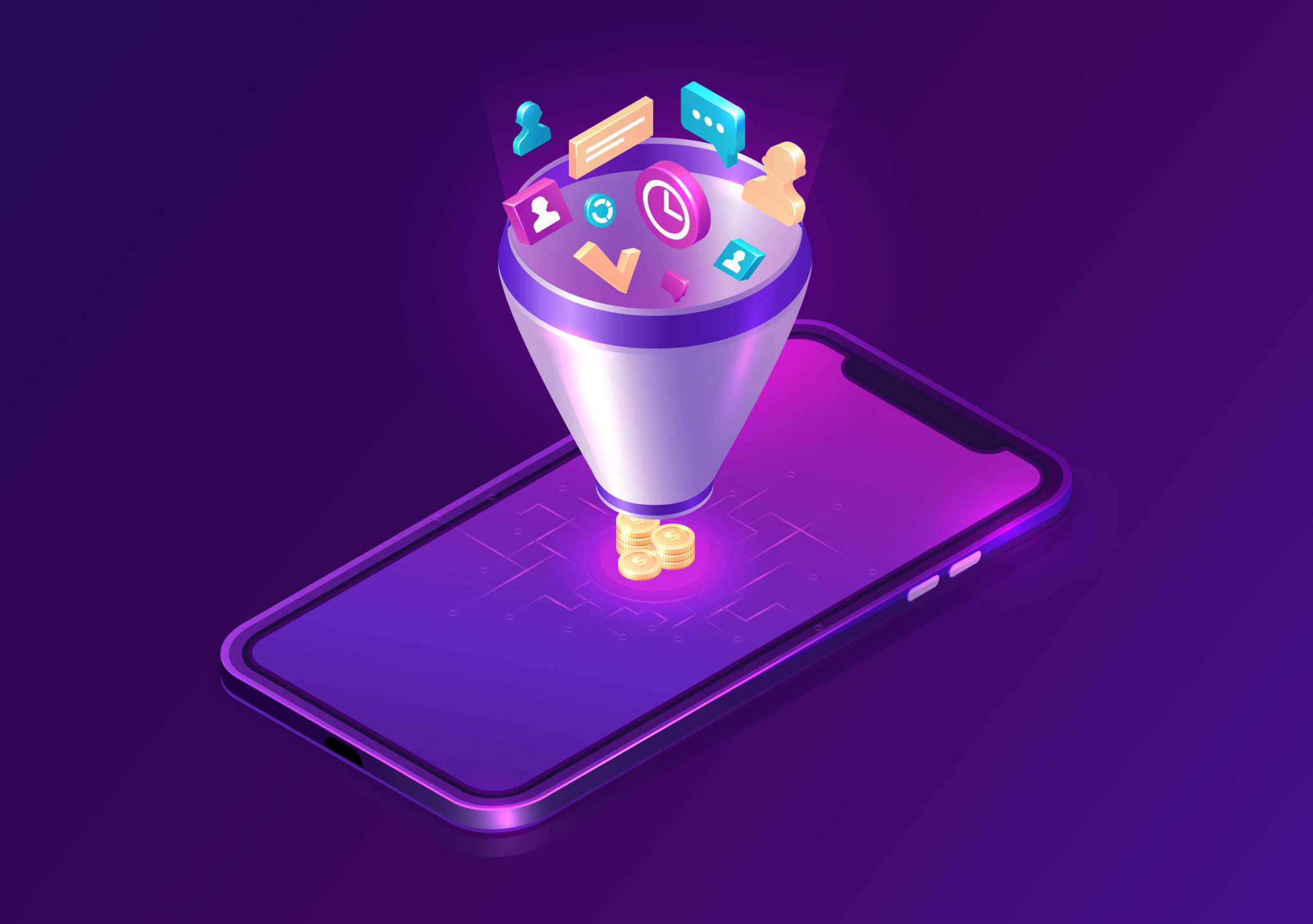In this post, we’ll describe the conversion funnel from the point of view of inbound marketing and the phases that comprise it. Let’s go!
What is a conversion funnel?
A conversion funnel is the path or series of steps users take to complete a conversion or a specific objective we have laid out for them. If we consider inbound marketing as our main digital marketing strategy, our conversion funnel must provide value-added content that brings users closer to the brand as they travel through the funnel. Finally, we not only achieve a conversion but we also make users loyal to our brand and generate brand reputation.
The different phases in the conversion funnel are:
TOFU: TOP OF THE FUNNEL
This is the first phase in the funnel and its goal is to attract traffic. This can be done through social networks, our SEO, banners… The goal is to offer content to users so they can visit us and discover our brand.
It’s important to bear in mind that during this phase the user doesn’t know us, so the goal is to generate qualified traffic, which means that at this stage an offer or promotion might not be the best solution because we’re not offering valuable content and we don’t have the user’s trust.
For example, imagine our company sells framed art prints. Someone who wants to decorate their walls and doesn’t really know what they need will probably search for “wall decoration.” If we work on our content and our SEO, Google will show this user an article we wrote about decoration and there’s a big chance the user will visit our site.
MOFU: MIDDLE OF THE FUNNEL
In this second phase of the funnel, our goal is to generate a lead or obtain the user’s contact information. Our goal is to show the user content that satisfies their need for information and which they will consider as a possible option when deciding on what future purchases to make.
For example, if we continue to elaborate on the previous example, imagine that the user who has found us through our SEO accesses our blog and starts to read our article. In it, we explain how we can combine pictures with different frames and sizes to create a decorative wall composition at a low price. At this moment, the user will see us as a brand that has value and expertise, and if we give them the option of downloading a whitepaper on how to create decorative wall compositions (in exchange for very little information), the user will probably download it.
BOFU: BOTTOM OF THE FUNNEL
During this final phase in the funnel we need to achieve our conversion objective, as the user has already considered us an option and it’s time to convince them to convert. It’s important for the content we show users to be appropriate and, if possible, personalised.
Continuing with the example of the user who has downloaded our whitepaper on how to create decorative wall compositions, and who we have identified, now’s the time to impress them with a 15% discount for online purchases. If we personalise our message, that is, if we show the user the pictures they were looking at in the whitepaper, the user will associate the discount to the decoration ideas they were browsing and we will have accomplished that personalisation we were looking for. And, of course, a discount is always an important sales incentive that might end up swaying the user.
Author: Pedro Mellinas, Digital Marketing Area Director
Header image: Sales Vector created by upklyak – www.freepik.es

Formamos marketers digitales de alto rendimiento a través de una metodología que une capacitación en competencias técnicas con capacitación en habilidades de performance multiplicando resultados.
